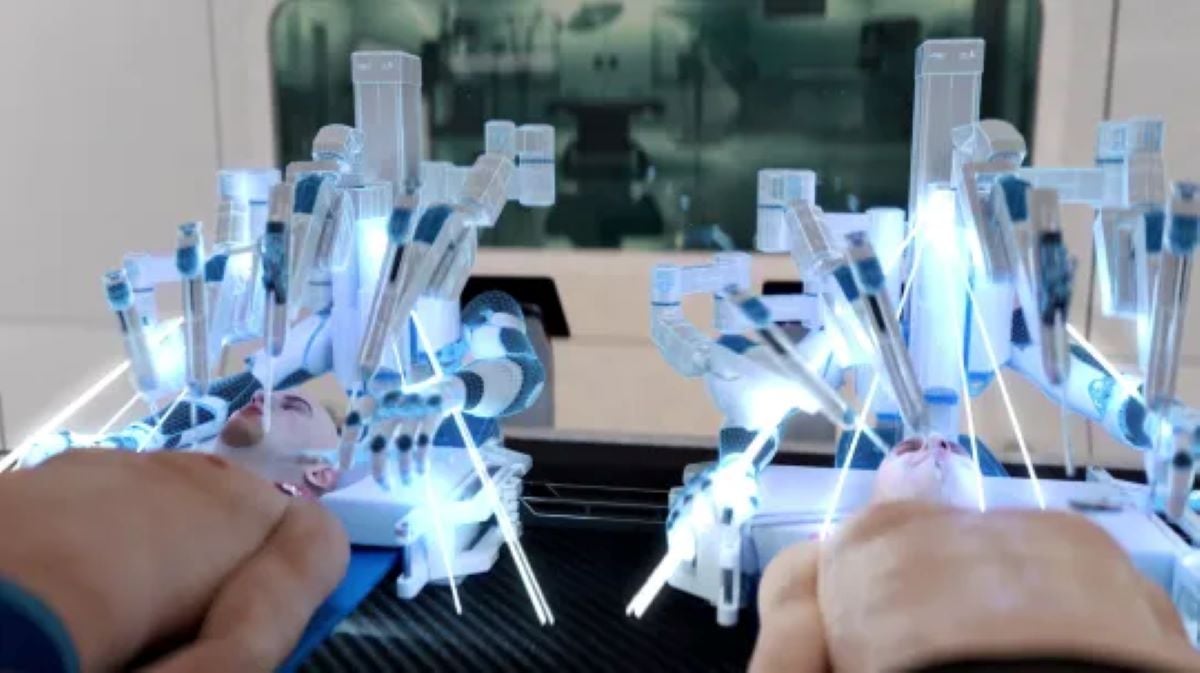Summary: BrainBridge, a neuroscience and biomedical engineering start-up, has unveiled a revolutionary concept for a robotic head transplant system. This ambitious project aims to offer a new lease on life for patients suffering from terminal illnesses and neurodegenerative diseases by transferring their heads onto healthy donor bodies.
The procedure would involve advanced robotics, artificial intelligence, and real-time molecular-level imaging to ensure precise reconnection of vital structures. While still in the conceptual phase, BrainBridge is actively seeking top talent to overcome current challenges, such as spinal cord repair, and push the boundaries of medical science.
Key Facts:
- BrainBridge’s head transplant system concept utilizes advanced robotics and AI to transfer a patient’s head onto a healthy donor body.
- The procedure aims to offer renewed hope for individuals with terminal illnesses, neurodegenerative diseases, and paralysis.
- BrainBridge is actively recruiting specialists to overcome challenges in spinal cord repair and accelerate progress in whole-body transplantation.
Source: Neuroscience News
In a bold move that pushes the boundaries of medical science, BrainBridge, a pioneering neuroscience and biomedical engineering start-up, has unveiled a groundbreaking concept for a “head transplant system.”
While still in the conceptual phase, the company’s vision is to develop a fully automated, robotic system capable of performing this complex procedure within the next eight years.
The potential implications of this technology are immense, offering renewed hope to individuals suffering from terminal illnesses, neurodegenerative diseases, and paralysis.
BrainBridge envisions a future where patients with otherwise untreatable conditions could receive a new lease on life through a whole-body transplant, essentially replacing their diseased or damaged bodies with healthy ones.
The process, as demonstrated in a recently released video, involves a sophisticated robotic system that would simultaneously remove the heads of both the donor and recipient, then seamlessly transfer the recipient’s head onto the donor’s body.
The procedure would be guided by artificial intelligence (AI) and real-time molecular-level imaging, ensuring precise reconnection of the spinal cord, nerves, and blood vessels.
Overcoming Challenges and Attracting Top Talent
One of the most significant challenges in realizing this ambitious concept is the current inability to fully repair nerve and spinal cord damage. BrainBridge acknowledges this hurdle and is actively recruiting top specialists in various fields to collaborate on finding solutions.
The company believes that by fostering a collaborative environment and attracting the brightest minds, they can accelerate progress in this critical area.
In the short term, BrainBridge anticipates that their research and development efforts will lead to breakthroughs in spinal cord reconstruction and whole-body transplantation techniques.
In the long term, the company aims to revolutionize healthcare as we know it, exploring new frontiers in medical science and expanding into areas that were previously considered unimaginable.
Ethical Considerations and the Path Forward
The prospect of head transplantation raises complex ethical questions and concerns. BrainBridge emphasizes that their approach is rooted in rigorous scientific research and adheres to the highest ethical standards.
The company is committed to engaging in open dialogue with the scientific community, policymakers, and the public to address these important issues.
While the concept of head transplantation may seem like science fiction, it represents a significant step forward in the field of neuroscience. The potential benefits for individuals facing life-threatening conditions are undeniable.

By pushing the boundaries of what is possible, BrainBridge is paving the way for a future where innovative medical technologies can transform lives and offer hope to those who need it most.
A Brief History of Head Transplants
The concept of head transplantation is not entirely new. It has captured the imagination of scientists and the public for centuries, with early attempts dating back to the early 20th century. In 1908, the first recorded head transplant was attempted on a dog, albeit unsuccessfully.
In the 1950s, Dr. Vladimir Demikhov conducted experiments involving grafting a living head onto other dogs, effectively creating two-headed canines. While not technically considered a full head transplant, these experiments pushed the boundaries of what was considered possible in surgical procedures.
In the 1970s, Dr. Robert White achieved a significant milestone by performing a head transplant on a rhesus monkey. The monkey survived for eight days and retained sensory functions but was unable to move its new body due to the inability to reconnect the spinal cord.
More recently, controversial neurosurgeon Sergio Canavero claimed to have successfully performed a human head transplant, although both the donor and recipient were deceased. The claim sparked debate and raised questions about the ethical implications of such procedures.
About this neurotech, robotics, and head transplantation research news
Author: Neuroscience News Communications
Source: Neuroscience News
Contact: Neuroscience News Communications – Neuroscience News
Image: The image is credited to BrainBridge







